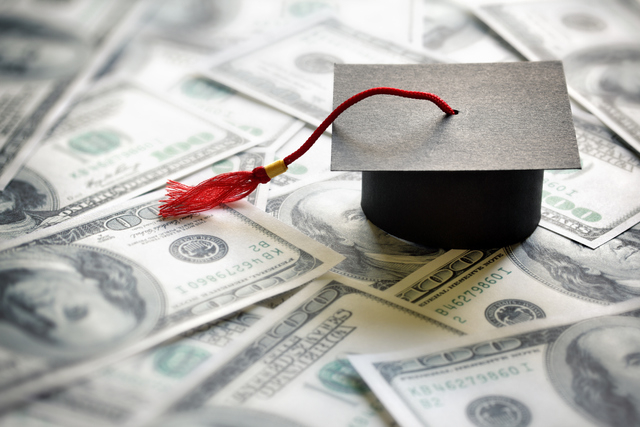Busting myths about Nevada’s groundbreaking Education Savings Accounts

Are you better off than your parents were?
If you‘re like most adult Americans, you likely answered "yes."
But do you expect your children will be better off than you are?
If you answer "yes" to that question, you‘re part of a rapidly shrinking minority.
Over the past decade and a half, a disheartening shift has occurred in what Americans predict for future generations. In 1999, two-thirds of American adults expected their children‘s lives to be better than their own, but as of last year, only one-third maintained that optimism.
Given that bleak outlook — informed, certainly, by decades of stagnant U.S. education performance — it‘s little wonder the country is singing Nevada‘s praises. After all, the Silver State in May took the greatest step any state has yet taken toward ensuring access for every child to a truly effective, quality education.
Nevada‘s new Education Savings Account program, made possible through the passage of legislation authored by Sen. Scott Hammond, is the nation‘s most sweeping and promising school choice opportunity. Any student who has spent 100 days in public school will be eligible to receive between $5,100 and $5,700 per year — which his or her parent may then use to fund private school tuition, home-based education, tutoring and a number of other school-related expenses.
Thanks to this new program, every child — regardless of family income — now has the freedom to leave a failing Nevada public school and attend one that is exceptional.
Suddenly, each child has a real opportunity to be challenged, encouraged and inspired.
Despite countless success stories of students who‘ve used Education Savings Accounts and other forms of school choice — and ignoring the mounting empirical data that prove parental choice in education improves outcomes for students, regardless of their participation in the program — opponents of progress have wasted no time in disseminating the predictable propaganda against any change to the status quo.
One of the most common — and entirely baseless — claims is that giving Nevada families the freedom to send their child somewhere other than their ZIP code-assigned public school will hurt Nevada‘s public schools. The most misleading — yet somehow, most popular — variation of this attack is that ESAs will take money from public schools. In reality, ESAs do the exact opposite.
Each time a student uses an ESA, per-pupil funding in the public schools will increase. That‘s because only a portion of what Nevada spends per student will be granted through the program, leaving the remaining dollars in the public schools. Grant amounts will be between $5,100 and $5,700 per year. On average, Nevada spends more than $9,600 annually to educate each student.
Opponents also contend that expanding educational options will increase the gap between traditionally high-performing students and those who tend to struggle more in school. The idea here — that disadvantaged families will lack the ability to choose the proper educational environment for their children and thus shouldn‘t have the chance — is an insult to parents.
It‘s also a ludicrous argument.
Should homeowners be denied access to fire extinguishers because some of them may choose not to use them, or not be able to figure them out?
Because not all children will use a program, should none be allowed to?
The reality is that school choice forces all schools — including public ones — to be more responsive to students and parents. Because if the schools aren‘t responsive, they risk losing the child and the dollars that now follow him or her.
Then there are those who argue that private schools are too expensive, that a $5,700 grant won‘t be enough to assist low-income families in providing an alternative education to a child. A soon-to-be-released survey of private schools in Nevada conducted by the Nevada Policy Research Institute shows more than 20 schools charge tuition within the grant amount, and many others charge only slightly more. Online schooling, home-based education and tutoring also offer lower-priced additional options.
And now that Nevada will have many new families able to pay more than $5,000 a year for alternative education, more private schools will open, expand and offer pricing that is within range of the grant.
Education Savings Accounts tear down the wall that has kept many of Nevada’s most underprivileged and struggling students out of the schools that can provide them with the exact educational experiences they need.
Every child deserves an excellent education.
ESAs are a historically important and powerful step toward ensuring that very outcome.
Chantal Lovell is the deputy communications director at the Nevada Policy Research Institute. For more, visit http://npri.org.